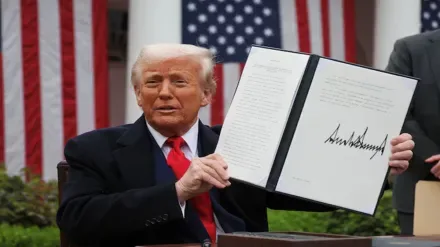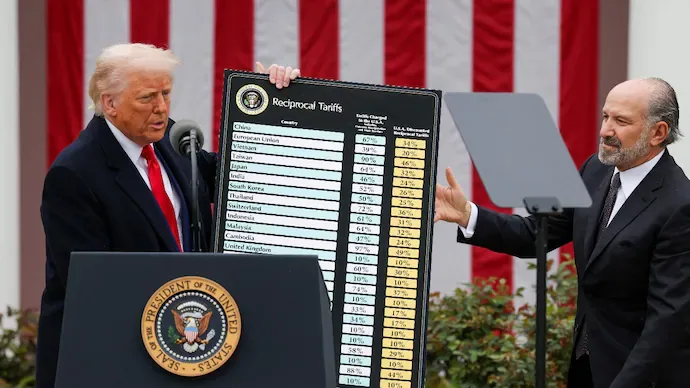Discover the latest on Trump’s 2025 semiconductor tariffs, their impact on tech giants, and what it means for consumers. Stay informed with our comprehensive guide.
Table of Contents

Trump Shakes Up Tech Industry with New Semiconductor Tariffs
In a move that’s sent ripples through the tech world, President Donald Trump has announced plans to implement new tariffs on imported semiconductor chips. This decision, revealed on April 13, 2025, has sparked intense debate and raised questions about the future of the electronics industry.
Key Takeaways:
- Trump to announce semiconductor tariff rates within a week
- Smartphones and computers may face new levies
- Trade war triggers most volatile markets since 2020
- Concerns rise over potential economic impact
The Semiconductor Saga: What’s at Stake?
President Trump’s latest announcement signals a significant shift in U.S. trade policy, particularly targeting the semiconductor industry. “We wanted to uncomplicate it from a lot of other companies, because we want to make our chips and semiconductors and other things in our country,” Trump stated during his return to Washington.
This move comes on the heels of a national security trade probe into the semiconductor sector, highlighting the administration’s focus on domestic production and technological independence.
Impact on Tech Giants and Consumers
| Product Category | Current Status | Potential Impact |
|---|---|---|
| Smartphones | Temporarily exempt | May face new tariffs |
| Computers | Temporarily exempt | May face new tariffs |
| Semiconductor chips | Under investigation | Likely to face tariffs |
Commerce Secretary Howard Lutnick shed light on the administration’s plans, revealing that critical technology products from China would face separate new duties alongside semiconductors within the next two months.

Market Volatility and Economic Concerns
The back-and-forth on tariffs has triggered the wildest swings on Wall Street since the COVID-19 pandemic of 2020. The Standard & Poor’s 500 index has already seen a decline of more than 10% since Trump took office on January 20, 2025.
Billionaire investor Ray Dalio expressed concerns about the potential economic fallout: “Right now we are at a decision-making point and very close to a recession. And I’m worried about something worse than a recession if this isn’t handled well.”
The Global Response
China has already increased its own tariffs on U.S. imports to 125% in response to Trump’s actions. The Chinese Ministry of Commerce cryptically stated, “The bell on a tiger’s neck can only be untied by the person who tied it,” hinting at the complex nature of the ongoing trade disputes.
What’s Next for the Tech Industry?
As the situation continues to evolve, tech companies and consumers alike are left wondering about the future of electronics pricing and availability. The White House has opened an invitation to China for negotiations, but tensions remain high.
Trade Representative Jamieson Greer expressed optimism about potential deals with other countries: “My goal is to get meaningful deals before 90 days, and I think we’re going to be there with several countries in the next few weeks.”
FAQs: Trump’s 2025 Semiconductor Tariffs
Q: When will the new semiconductor tariffs take effect?
A: President Trump is expected to announce the tariff rates within the next week, with implementation likely to follow shortly after.
Q: Will smartphones and computers be affected by these tariffs?
A: While temporarily exempt from reciprocal tariffs, these products may face new levies under the semiconductor tariffs in the coming months.
Q: How might these tariffs impact consumer prices?
A: There’s potential for increased prices on electronic goods if companies pass on the additional costs to consumers.
Q: What is the goal of these tariffs?
A: The Trump administration aims to boost domestic semiconductor production and reduce reliance on foreign suppliers.
Q: How has China responded to these tariff announcements?
A: China has increased its own tariffs on U.S. imports to 125% and is evaluating the impact of recent U.S. tech product exclusions.
Stay tuned for more updates as this story develops. The future of the tech industry hangs in the balance as global powers navigate these turbulent trade waters.








